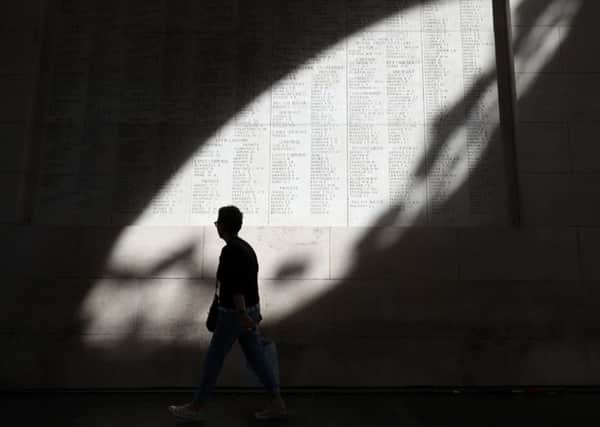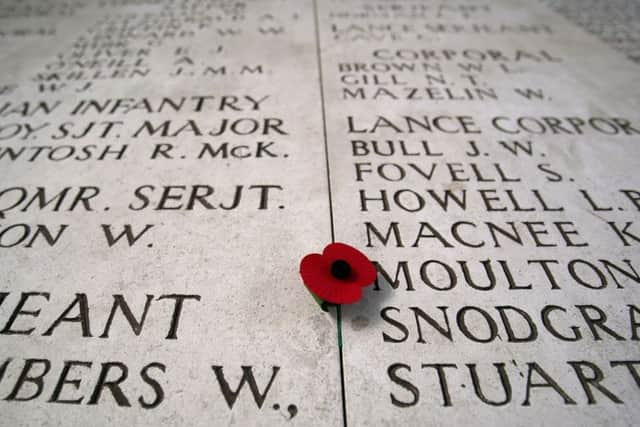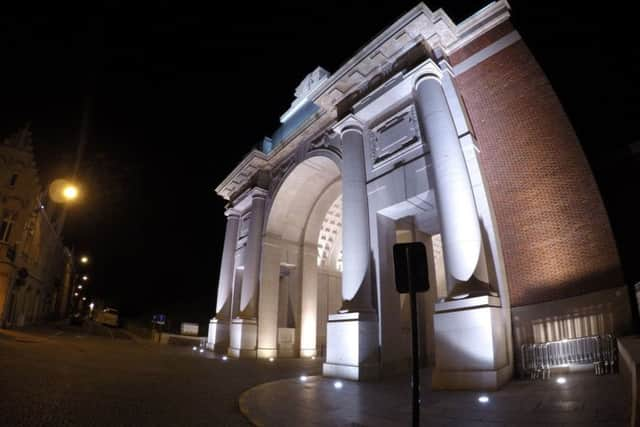Armistice 100: Reflecting on the act of Remembrance at the Menin Gate


“They shall grow not old, as we that are left grow old: Age shall not weary them, nor the years condemn.
“At the going down of the sun and in the morning, We will remember them.”
Advertisement
Hide AdAdvertisement
Hide AdThey are the most simple of words and yet they carry the most extraordinary emotional weight behind them.


Almost a century ago the last soldier fell to his fateful doom on the quagmire of the Western Front knowing that he gave his life for freedom, for his King and ultimately for his country.
That remarkable hero to become the last British soldier killed in action during the First World War was Leeds’ very own George Edwin Ellison.
In a cruel twist of fate George died just 90 minutes before the Armistice was called and paid the ultimate sacrifice while on patrol on the outskirts of Belgium.
Advertisement
Hide AdAdvertisement
Hide AdHe was one of 886,000 British military personnel to lose their lives in one of the nation’s deadliest campaigns.


But he is not just another statistic - George was someone’s son, someone’s father and someone’s husband.
And it is the remarkable stories of bravery, such as that of George Ellison, that make the act of Remembrance all the more significant.
To this very day the destructive nature of war still has a profound influence on who we are as human beings and as citizens of the world.
Advertisement
Hide AdAdvertisement
Hide AdDespite the passage of time those scars still run deep to this very day across the rolling countryside of Belgium where some of the bloodiest battles of the First World War were fought.
Once the city of Ypres was close to the point of being wiped off the map - decimated, ravaged and shell-shocked by the onslaught of conflict.
The luscious green fields that provided the green lung around its outskirts were transformed into barren land which knew only of death.
Not even the trees were capable of survival as the battles were won and lost around their roots.
Advertisement
Hide AdAdvertisement
Hide AdAnd yet despite this seeming devastation it is a city that has rebuilt itself.
Rising like a phoenix from the deadly, dusty ashes of war the city prides itself on the act of remembrance.
For it is where every single year hundreds of thousands of visitors make the pilgrimage to trace the footsteps of their treasured family members and piece together their own past.
Following the opening of the striking Menin Gate memorial in 1927, the citizens of Ypres wanted to find a way to express their gratitude for all those soldiers who had given their lives for Belgium’s freedom.
Advertisement
Hide AdAdvertisement
Hide AdEvery evening on the stroke of 8pm buglers close the road which passes under the memorial and sound the Last Post.
It is a tradition steeped in history which only endured a brief pause during the Second World War.
And as the buglers salute those who paid the price with their lives not a single mutter can be heard.
Young and old join alike in the same act of Remembrance as the standards flutter in the breeze.
Advertisement
Hide AdAdvertisement
Hide AdAnd as the sound of the horns reverberate around the memorial it is hard not to feel genuinely moved by the experience. It is only on closer inspection that you truly get a sense of the reality of the impact of the scale of loss.
For on the walls of the triumphal arch are the names of those who were missing. These soldiers never had a known grave.
On the large Hall of Memory are stone panels carved with the names of more than 54,000 Commonwealth soldiers who have never been identified or their remains found. Listed among those were the dozens of fallen comrades of the West Yorkshire Regiment with Major C.G.M Slade overseeing his fallen troop.
Amidst the seemingly endless list were three Pearsons: JPearson, R Pearson and T.H Pearson.
Advertisement
Hide AdAdvertisement
Hide AdWere they brothers who left behind a grieving mother back in Yorkshire? And what story do their lives tell?
But as the list of names continued it was hard not to be moved by the human sacrifice made and the stories of those who fought as well as those who were left behind.
However, on the completion the memorial it was discovered to be too small to contain all the names that were originally intended for the site.
Almost 35,000 names of those who were recorded as missing after August 15 1917 were then inscribed on the Tyne Cot Memorial.
Advertisement
Hide AdAdvertisement
Hide AdYet the one thing that struck me as we walked away from the Menin Gate was the lion of Britain –and also the lion of Flanders –guarding the names of those who died.
It is a fitting, yet simple, act of remembrance to those lionhearted soldiers whose names are immortalised on its walls as well as a significant symbol of pride.
Perhaps it is one that we should all feel as we remember those who paid the ultimate price for our freedom today.
And that is why with 100 days to go that the Yorkshire Evening Post is remembering those whose lives were touched by the First World War.